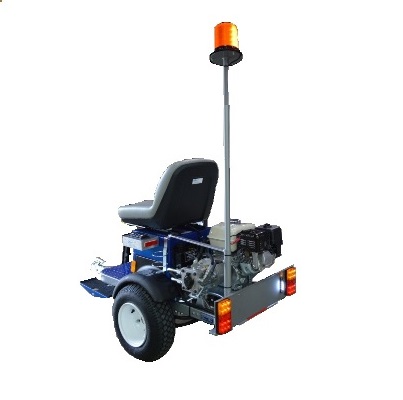How to transport and store an airless sprayer
1) Storage of an airless sprayer - Applies to diaphragm, piston and pneumatic airless sprayers
a) Never leave the unit pressurised, it can be dangerous if an unsuspecting person or child pulls the trigger and is hit by high pressure fluid, an injection hazards exists with airless sprayers so read the manual and follow the recommendation by the manufacturer of your airless sprayer
b) Cold climates, if you live in an areas where it gets very cold, fluid left in your machine may freeze, expand and crack a component of your airless sprayer such as a high pressure filter housing, fluid cylinder or piston rod. Pump saver may help lower the freezing point of any fluid in the machine but it can occur. If you do not live in such a cool climate just remember that this can still happen, if you see frost on the grass in the morning then you have a chance that this could happen to your airless sprayer.
c) Do not leave flammable materials in your airless sprayer whilst in storage, besides the obvious fire hazards of fluid slowly leaking out of the suction hose or gun, the smell can be pretty bad too.
d) Security, if you keep an airless sprayer in your garage or on-site, consider chaining it up with a padlock, airless sprayers are expensive and a popular choice amongst thieves.
e) Keep all of your airless sprayer accessories clean and in one place like a tool box or trunk. Nothing is more annoying than missing a gun extension or a tip seal when you are on the job.
2) Transport of an airless sprayer - Applies to diaphragm, piston and pneumatic airless sprayers
a) Always tie down your airless sprayer securely when in a vehicle, an airless sprayer such as a Graco Ultra Max II 795 can weigh up to 70kgs with a 30m paint hose wrapped around the handle. If you have to make a sudden stop this kind of weight will have some serious force if unsecured.
b) Be sure not leave thinners, petrol or any flammable material in the pump when transporting in a vehicle. This applies more so to vans and station wagons with a small enclosed space which can pose a fire risk or fumes can make the driver of a vehicle feel tired or sleepy.
c) Be careful with gas powered airless sprayers that the heat from the petrol motor exhaust does not burn a hole through your paint hose, most material braided hose will melt on contact with a hot exhaust cover. Be sure the wrap your airless sprayer paint hose clear of the exhaust.
d) Be careful when refuelling an airless sprayer in the back of a vehicle directly from the petrol pump at your local service or gasoline station. Static charge can sometimes release from the nozzle of the fuel pump hand piece with vehicles that have nylon or plastic protective liners on the trays or inside of vans. The plastic liner will insulate the machine from any earth and you may find that when you stick the fuel pump nozzle into the tank to refill the fuel that a little static charge occurs between the rim of the fuel tank and fuel pump nozzle. I have personally seen this and it does happen.
e) Turn the fuel tap of your petrol motor to the "off" position when driving. The motion of a vehicle moving including bumps in the road and corners can make your petrol airless sprayer motor flood with fuel in the carburettor. Honda motors are pretty bad for this, sometimes the fuel will leak down past the piston and rings and fill up the oil sump with fuel. If this happens you will only pull the starter cord once and then experience compression lock, the motor will no longer move. This will require draining the oil and replacing, not a good start to the days work.



